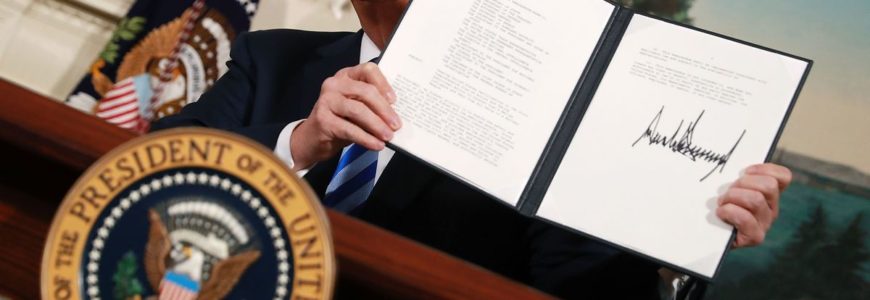
Despite Saudi Arabia’s admission that the killing of journalist Jamal Khashoggi earlier this month was premeditated, the Trump administration appears determined to maintain the U.S. partnership with Saudi Arabia, the United Arab Emirates, and Israel to put unprecedented pressure on Iran. The next step in this master plan will be the Nov. 5 full reimposition of sanctions on Iran.
According to recent reports, Peter Schweizer’s 1994 book Victory has helped inspire the U.S. approach to dealing with Iran, including the sanctions campaign to force the country to capitulate to U.S. demands. Their reliance on Schweizer’s account reveals the pitfalls of policymakers looking to the past to make policy for the future. The book’s boosters contend that the strategy of “maximum pressure”—unrelenting economic, ideological, and covert-action measures short of war against the Soviet Union—that allegedly brought down the Cold War nemesis can have a similar effect today on Iran. U.S. Secretary of State Mike Pompeo even echoed this theme in a recent article.
The only problem is that Schweizer’s narrative of U.S. policy and the Soviet collapse in the 1980s is flawed; it is not a reliable guide on how to deal with Tehran. In fact, the application of maximum pressure based on this triumphalist history may be counterproductive, strengthening the most conservative and hawkish elements in the Islamic Republic, alienating an increasingly destitute Iranian population, and weakening the trans-Atlantic alliance. The Trump administration’s current approach to Iran has little in common with the carefully calibrated approach President Ronald Reagan actually took toward the Soviet Union.
Schweizer’s book has appeal in Washington because it tells a compelling tale of U.S. policymakers effecting change in a complex world. “Examining the collapse of the Soviet Union outside of the context of American policy,” Schweizer sums up, “is a little like investigating a sudden, unexpected, and mysterious death without exploring the possibility of murder.” And in his telling, the man who slayed the Communist behemoth was Ronald Reagan.
But Schweizer’s work is far from a complete recounting of the facts of the case. After all, he did not have access to U.S. or Soviet archives and all they revealed at the time of writing, and he disregarded anything that detracted from Reagan’s own role, such as the idea that the Soviet Union died of self-inflicted injuries. Missing from Schweizer’s narrative is any semblance of Soviet agency; Moscow is acted upon but does not act. This is not how the Reagan administration saw the Soviet Union, and, crucially, it is not how President Donald Trump’s should see Iran.
Schweizer is correct that the Reagan administration intensified pressure on the Soviet Union, but pressure was not the sum total of U.S. policy toward Moscow during the 1980s. It ignores Reagan’s overtures to the Kremlin, long predating the arrival on the scene of the reformist Mikhail Gorbachev in 1985. Some of these moves, such as Reagan’s spring 1981 letter to Leonid Brezhnev, urging the then-Soviet leader to work with him to reduce international tensions, are well known. Others remain in the shadows, such as the back channel established by U.S. Ambassador to West Germany Arthur F. Burns that same year. As Reagan denounced the Soviet Union as an “evil empire” destined for “the ash heap of history,” Burns was reassuring his top-level Soviet interlocutors that this was no different than “parents getting carried away by anger and using insulting language towards their own children.”

